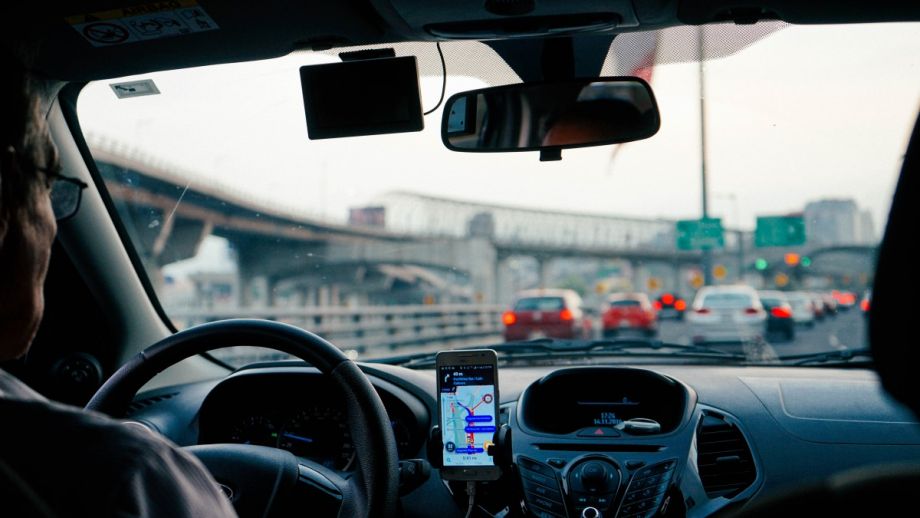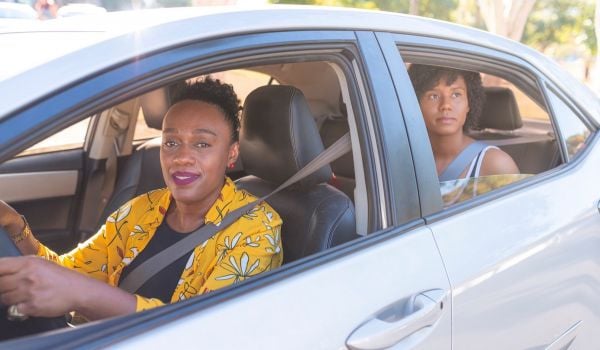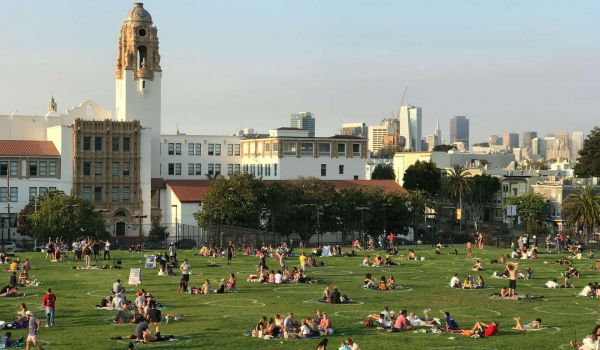Welcome to “The Mobile City,” our weekly roundup of noteworthy transportation developments.
The debate over the effect of ride-hailing services on city transportation networks has been going on for about as long as Uber and Lyft have been offering their “networked transportation” services to an eager public. On the one side, proponents say that they reduce the number of cars on the road, thus lessening congestion, and that they can serve as last-mile feeders to public transit. On the other, critics note that all those operators driving around waiting for riders to materialize take up road space themselves, thus making congestion worse. A new study comes down on the critics’ side.
Another new study could influence the debate over the Biden Administration’s $2 trillion infrastructure spending proposal. Critics of the proposal say the total amount is too much, and some members of Congress say that the current ratio of road to transit spending is too heavily tilted towards roads. And while everyone argues over big tax hikes or big spending cuts, University of Georgia research suggests that we can do a few million little things over the next three years that would produce some $20 billion in savings on infrastructure maintenance every year. And that, you may recall, is what it would cost to give every sizable city in America transit service people would actually use (“The Mobile City,” April 21).
Finally, chances are that some of the invited guests who attended Sunday’s 93rd Academy Awards ceremony took Uber or Lyft to get to the event. This year, however, COVID concerns moved most of the ceremony to a new venue: Los Angeles Union Station, whose main waiting room was converted into a socially distanced banquet hall of sorts for the Oscars. Even though Angelenos are used to the entertainment industry disrupting their everyday routines, the way the Academy of Motion Picture Arts and Sciences went about cordoning off Union Station drew negative reviews from some Angelenos on behalf of many riders who had to use the station both ahead of and during the awards program.
Researchers Find Ride-Hailing Makes Urban Congestion Worse
A new study confirms what many studies have previously said: ride-hailing cars make traffic congestion worse.
A team of researchers at the Future Urban Mobility (FM) Interdisciplinary Research Group at the Singapore-MIT Alliance for Research and Technology (SMART) recently published a paper in the journal Nature Sustainability titled “Impacts of transportation network companies on urban mobility.”
And what are those impacts? According to an MIT press release, the researchers created a model based on 44 cities in the U.S. where Uber and Lyft operate. They found that ride-hailing vehicles produce a nearly one percent rise in the amount of congestion and a 4.8 percent increase in its duration. On top of this, the researchers also found that the use of ride-hailing services leads to an 8.9 percent fall-off in public transit ridership and a mere one percent drop in private vehicle ownership.
The study was the first to incorporate data from both of the principal “transportation network companies” (TNCs), Uber and Lyft. Most previous studies of the subject have focused on Uber alone, which controls 69 percent of the ride-hailing market in the United States. Including the 29 percent of ride-hail trips provided by Lyft in the dataset makes this study more comprehensive, as it takes into account 98 percent of all ride-hailing trips in the country.
The findings suggest that ride-hailing may not be the urban-transportation magic bullet its proponents have presented it as, and they definitely show that ride-hailing has a negative impact on more efficient shared transportation modes.
But, cautions MIT Urban Mobility Lab postdoctorate researcher and study co-author Hui Kong, “We are still in the early stages of TNCs and we are likely to see many changes in how these ride-sharing businesses operate. Our research shows that over time TNCs have intensified urban transport challenges and road congestion in the United States, mainly through the extended duration and slightly through the increased intensity. With this information, policies can then be introduced that could lead to positive changes.”
Little Things Add Up to Big Infrastructure-Maintenance Savings, Say Researchers
Readers of a certain age may recall a famous series of television commercials for motor oil filters in the 1980s. The ads featured a mechanic who explained he just had to replace an engine because the car’s owner didn’t change the filter. At the end, he held up the filter and said, “You can pay me now, or you can pay me later.”
According to academic research reported on in Archinect, that auto mechanic’s advice applies to state transportation departments too. By replacing minor bridge components like damaged expansion joints on an ongoing basis, researchers at the University of Georgia say the departments could significantly extend the life of those bridges and save huge sums in the process.
How much the departments would have to pay now: About $10 billion over three years’ time. How much they would save as a result: $20 billion a year on an ongoing basis by 2024. And, of course, the annual expenditures for the regular preventive maintenance would be lower going forward as well.
In addition, regularly replacing expansion joints would add 25 years to the average lifespan of a highway bridge, taking it from 75 to 100 years. And preventive maintenance of this type might also prevent catastrophic failures like the collapse of the 40-year-old bridge that carried I-35W over the Mississippi River in Minneapolis in 2007.
The researchers analyzed data in the Federal Highway Administration’s National Bridge Inventory for bridges in Alabama, Florida and Georgia for their study. They noted that theirs was the first study to consider bridges not as static objects but as dynamic systems whose performance changes as the condition of their elements changes.
“Prior to our work, we hadn’t seen a mathematical model that considers the interaction between bridge elements,” said Mi Geum Chorzepa, a University of Georgia associate professor and the study’s principal investigator. “We need a more realistic way to assess bridge conditions and prioritize preventive maintenance, particularly in such a challenging budget environment.”
Besides, it’s not like the money couldn’t be put to equally good use elsewhere.
LA Union Station Patrons Give 93rd Oscars Lousy Reviews
It must have seemed like a good idea at the time: Move the main awards ceremony for the 93rd Annual Academy Awards out of Hollywood’s Dolby Theater, where the sight of a half-empty auditorium might deliver the wrong message to the millions who tune into the Oscars each year on TV. But the choice of venue for the relocated event turned out to be a box-office bomb for the people who actually use the venue every day, says a news story in The Hollywood Reporter.
The venue in question: Los Angeles Union Station, hub of the LA region’s commuter rail network and a major transfer point between Metrolink commuter rail, the Metro B (red) and D (purple) subway lines and city buses. As the headline on the Reporter’s post-Oscars story on the event put it, “Transit Riders Got the Short End of the Stick” from the Academy of Motion Picture Arts and Sciences.
The Oscar ceremony took over the west half of the station as well as its ticket concourse and Grand Waiting Room. The takeover led to the relocation of bus stops, pick-up and drop-off points for nearly a month, the closure of many of the streets surrounding the station on the weekend of the event, and a forced detour of users to the station’s east entrance via a long, dark and narrow underpass and a trek of anywhere from one-half to three-quarters of a mile.
As the transportation hub remained in service both in the runup to and during the event, the closures and detours drew critical reviews from many who had to endure them. Perhaps the most notable bad review came from filmmaker Sean Meredith, who got upset when he saw a passenger in a wheelchair being denied even a small exception so he could travel 300 feet to the subway station entrance instead of taking a mile-long detour.
In his complaint to the Reporter reporter, Meredith pointed out the hypocrisy of the academy’s treatment of disabled riders in light of its nomination of the film “Crip Camp” for the Best Documentary Feature Oscar and its first-ever provision of a ramp for honorees in wheelchairs to access the awards stage.
Other rider advocates were no more kind. MIchael Schnieder, founder of the LA safety-advocacy group Streets for All, told the Reporter that he had been critical of the Academy’s plans since they were announced and that “the situation played out exactly as I expected.
“The Oscars were prioritized and transit riders got the short end of the stick,” he continued. “The images of people walking in that incredibly unpleasant and long tunnel and the guy in the wheelchair having to detour for a mile is all I needed to see to understand where the city’s priorities were on this.”
An unidentified LA Metro spokesperson quoted in the story said the agency received no complaints about station access over the weekend and that it provided both a shuttle bus and ADA-compliant shuttles to ferry passengers from the east side of the station to the west-side access and pickup points. But Meredith also noted that when the Oscars take place at their usual location, a heavily used subway station in Hollywood is also shut down for the event. “These are both major transportation hubs; this shouldn’t be happening,” he said.
Know of a development that should be featured in this column? Send a Tweet with links to @MarketStEl using the hashtag #newstarts.

Next City contributor Sandy Smith is the home and real estate editor at Philadelphia magazine. Over the years, his work has appeared in Hidden City Philadelphia, the Philadelphia Inquirer and other local and regional publications. His interest in cities stretches back to his youth in Kansas City, and his career in journalism and media relations extends back that far as well.
Follow Sandy .(JavaScript must be enabled to view this email address)





_920_518_600_350_80_s_c1.jpg)










